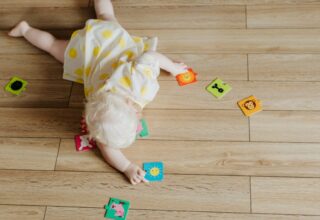When Do Babies Start Crawling? A Comprehensive Guide
As a parent, it’s natural to want to know when your baby will start crawling. Crawling is a significant milestone in a baby’s development, and it’s an exciting time for parents to watch their little ones explore and discover the world around them. In this comprehensive guide, we’ll cover everything you need to know about when babies start crawling, the different types of crawling, and what you can do to encourage your baby’s crawling development.
What is Crawling?
Crawling is a stage in a baby’s development where they move themselves around by using their arms and legs. It’s an essential step towards independent movement and the next phase of development, such as standing and walking. There are different types of crawling, and not all babies crawl in the same way.
When Do Babies Start Crawling?
Babies typically start crawling between six and ten months of age, although some may start as early as four months or as late as twelve months. Every baby develops differently, and there is no one set timeline for crawling development. Some babies may skip crawling altogether and move straight to walking, while others may use alternative methods to move around, such as scooting or rolling.
The Different Types of Crawling
There are several types of crawling, and each baby may develop their unique way of crawling. Some of the most common types of crawling include:
- Traditional Crawling: This type of crawling involves using both arms and legs to move forward. The baby will alternate between moving their right arm and left leg and left arm and right leg.
- Commando Crawling: Also known as belly crawling, commando crawling involves dragging the body along the floor using the arms and legs while keeping the belly in contact with the ground.
- Crab Crawling: In this type of crawling, the baby moves sideways, using one arm and one leg on the same side of the body.
- Bear Crawling: Similar to the traditional crawling, bear crawling involves crawling on all fours, but with straight legs.
- Encouraging Crawling Development
There are several things you can do to encourage your baby’s crawling development. Here are a few tips to keep in mind:
- Tummy Time: Give your baby plenty of tummy time to build the muscles they need to crawl. Start with a few minutes a day and gradually increase the time as your baby gets stronger.
- Use Toys: Place toys just out of your baby’s reach to encourage them to move towards them.
- Create a Safe Space: Create a safe space for your baby to crawl and explore, free from hazards like sharp edges, stairs, or small objects that could pose a choking hazard.
FAQs
Q: What if my baby doesn’t crawl?
A: Every baby develops differently, and some may skip crawling altogether. If your baby is not crawling by twelve months of age, consult with your pediatrician to ensure there are no underlying developmental issues.
Q: Can I encourage my baby to skip crawling and go straight to walking?
A: It’s essential to let your baby develop at their own pace. Encouraging your baby to walk before they are ready can lead to developmental delays and other issues.
Q: Is crawling necessary for development?
A: Crawling is an essential milestone in a baby’s development, as it helps build strength in their arms, legs, and core muscles. It also helps develop hand-eye coordination and spatial awareness.
Q: What are the signs that my baby is ready to crawl?
A: Your baby may show signs of crawling readiness, such as rocking back and forth on all fours, scooting around on their belly, or pushing up on their hands and knees.
Q: Can I help my baby learn to crawl faster?
A: It’s important to remember that every baby develops at their own pace, and there is no set timeline for crawling development. While there are things you can do to encourage your baby’s crawling development, it’s essential to let them take the lead and move at their own pace.
Conclusion
Crawling is an exciting milestone in a baby’s development, and it’s natural to be eager to know when your baby will start crawling. While there is no set timeline for crawling development, most babies start crawling between six and ten months of age. There are different types of crawling, and every baby may develop their unique way of crawling. You can encourage your baby’s crawling development by giving them plenty of tummy time, using toys, and creating a safe space for them to explore. Remember to let your baby develop at their own pace, and consult with your paediatrician if you have any concerns about your baby’s development.
How useful was this post?
Click on a star to rate it!
Average rating 0 / 5. Vote count: 0
No votes so far! Be the first to rate this post.




